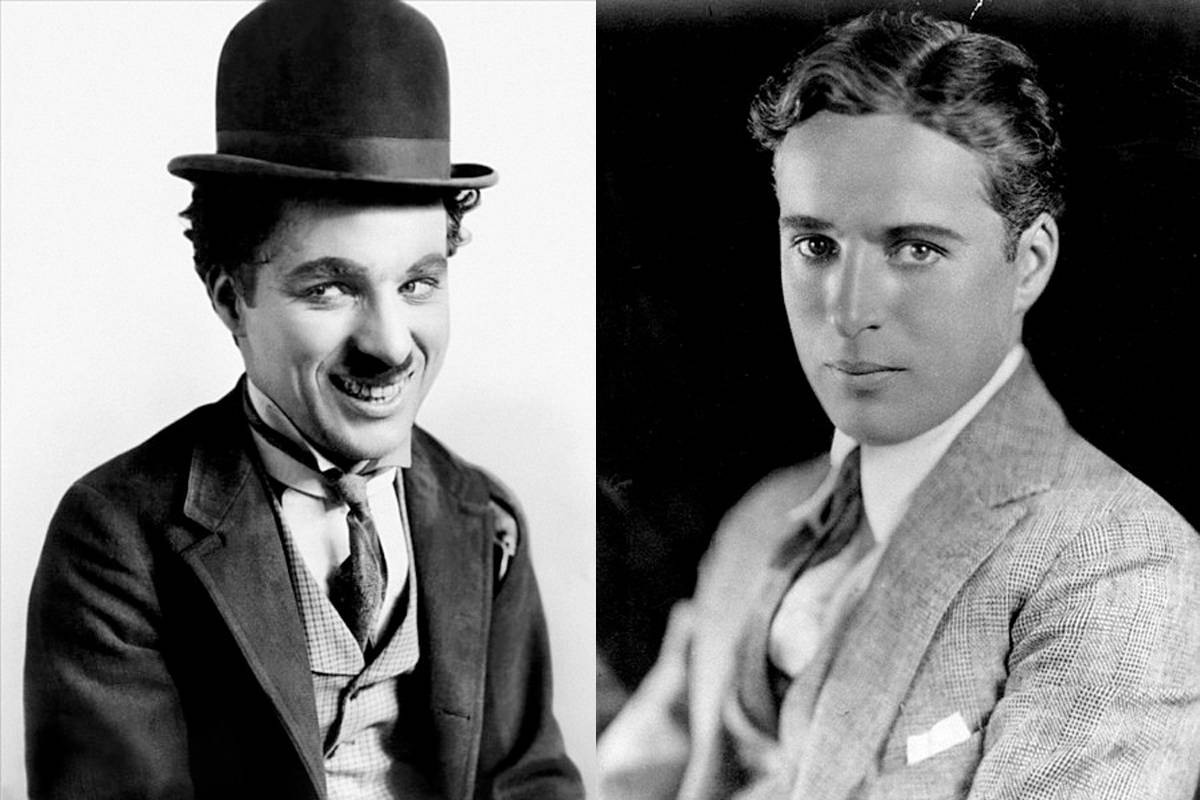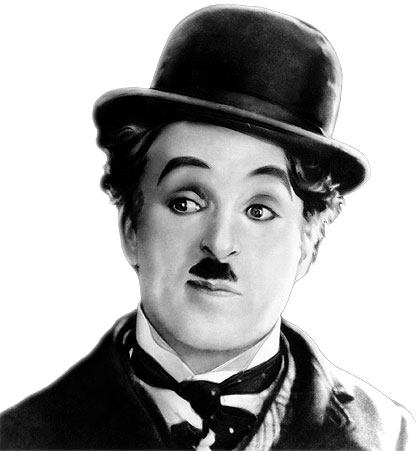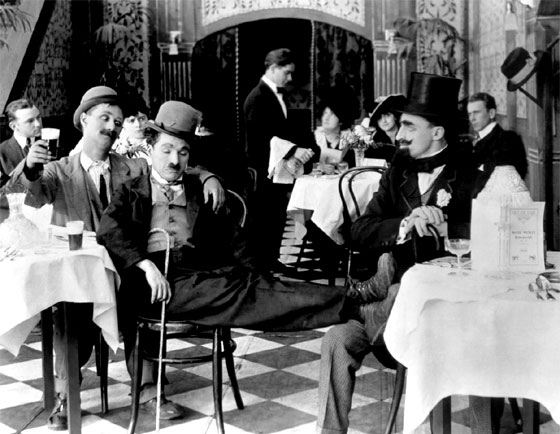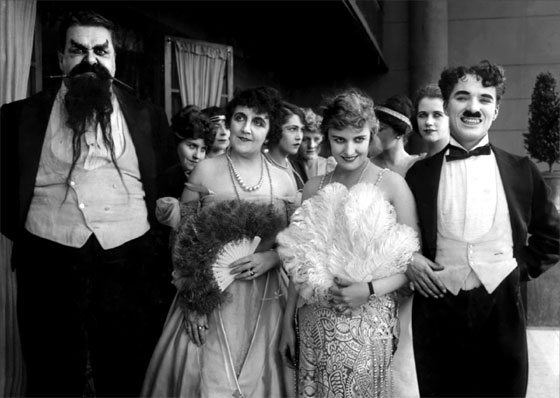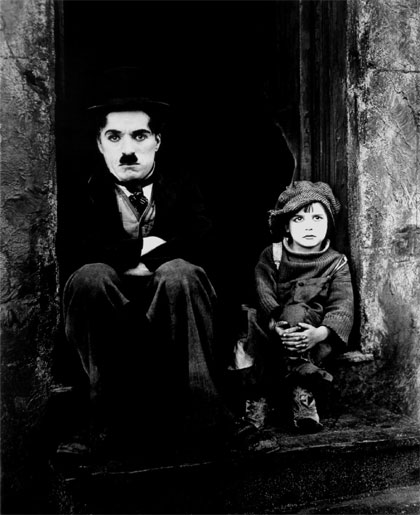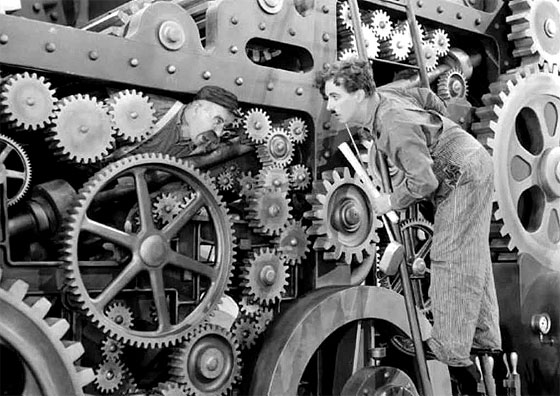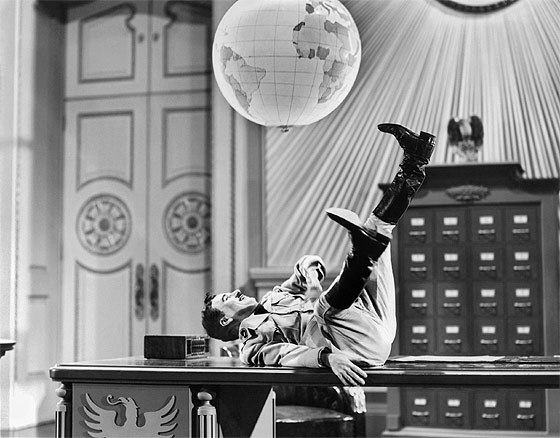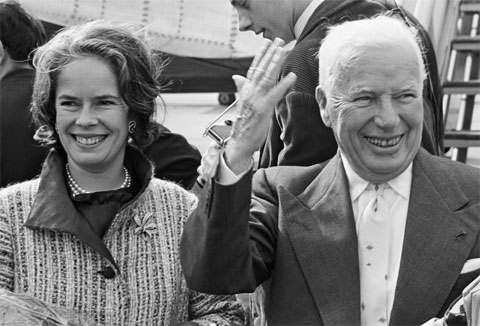The first three decades of the 20th century saw the birth and splendor of silent films and the emergence of talented actors and filmmakers who enjoyed immense popularity. Of all of them, none would reach such unanimous recognition among the public and critics as the British Charles Chaplin (1889-1977), considered one of the great geniuses in the history of the seventh art.
Charles Chaplin characterized as Charlot
Creator of the tender and humane Charlot, a more universal character if possible than the same actor and filmmaker, Charlie Chaplin in his mature filmography surpassed the merely playful idiosyncrasy of the comic genre to convey to the public his critical perspective on savage capitalism, the rise of the totalitarianism and the dehumanization of the modern world. The depth of such charges, the validity of which we verified when we revisited his films, came to put him in the crosshairs of the American “witch hunt”, to the point of forcing him to return to his country: no fact better illustrates his insubordinate status as a committed artist.
Biography
Charlie Spencer Chaplin’s parents were Jewish singers and various actors who, in their time, achieved reasonable success. Especially the mother, Hannah Hili, daughter of a shoemaker, petite, funny and with a nice voice. The child was born at eight o’clock in the afternoon on April 16, 1889, on East Lane, Walworth, London.
It was not a good time for the family. The father, Charles, had left home in pursuit of his alcoholic hobby, and Hannah was forced to support her children Sydney and Charles on her own. He was at the peak of his artistic career under the pseudonym Lily Harvey, but his voice was beginning to fail. In 1894, during a performance at Aldershot, his twittering broke in the middle of a song. The businessman sent five-year-old little Charles on stage, who imitated Lily’s voice including the final faintness, much to the amusement of the public. That was his artistic debut.
Chaplin in A Night Out ( Night owl Charlot, 1915)
Failure and lack of money disrupted Hanna Hill’s mental health, and she began to show signs of misplacement. She and the children moved to the Lambeth Street nursing home. Sydney and Charlie attended Hanwell’s Poor Children’s School for a time, suffering from its severe discipline and ridicule from the more fortunate children. In 1896 the state of Hannah was forced to confine it in a brakepathic sanitarium. The following year Charlie joined the Eight Lancashire Lads, a group of amateur youth actors who toured the villages. Later he was part of other traveling companies, already professional but very modest. In 1898 the father died, while Charlie Chaplin was already an expert child actor.
In 1901, at the age of twelve, he played the leading role in Jim, the Romance of a Cockney, and four years later he toured with The Painful Predicament of Sherlock Holmes. 1906 was lucky for the young comedian. It began with a contract at Casey Court Circus as one of the first attractions and ended with another contract for the famous Fred Karno pantomime company, in which Stan Laurel also performed.
The beginnings in Hollywood
At the age of nineteen, Charlie experienced the first of his many intense romances, falling madly in love with the young actress Hetty Kelly. With Fred Karno, the future Charlot had perfected and diversified his remarkable mimic resources, and the director included him in the troupe that made a tour of Paris in 1909 and the following year another of six months in the United States. It was the time when Mack Sennett had great success with his short films of bathers and policemen, based on running, exaggerated gestures, sticks and fights with cream pies. Sennett guessed the cinematographic possibilities of Chaplin’s more refined and complex mimicry, and when Chaplin went on his second tour in 1912, he convinced him to join his production company, Keystone.
The Adventurer (1917)
Charlie Chaplin arrived in Hollywood in the spring of 1913, and began work in November. On February 2, 1914, his first film, Making a Living ( Earning a living, also known as the journalist Charlot ) was released. In that same year, he shot 35 one-roll films (shorts between twelve and sixteen minutes long), written and directed by Sennett, Charles himself, or other directors. His characterizations were still only sketches of the naive and sentimental wanderer who would make him famous all over the world, but as Chaplin interpreted a different job or situation in each one, they would later be baptized as a dancing Charlot, a waiter chariot, a conquering chariot, a thief chariot elegant, etc.
The success was overwhelming, and in 1915 the production company Essanay stole his star from Sennett for a contract of $1,500 a week, a fabulous figure for a silent film comedian, who in Keystone had been charging ten times less. With Essanay, Chaplin went on to write and direct the fourteen films he shot that year. They already had a duration of two reels, a more complicated plot that introduced romantic and melancholic touches in the humorous recipe, and a meticulously structured and rehearsed script.
In all of them Chaplin was the absolute protagonist (in some in a female role), and in most his partner was Edna Purviance. It is worth remembering A Night in the Show, The Champion, A Night Out and especially The Tramp (The vagabond), in which the character who would later become known as Charlot rounded off. He would later tell himself that he was choosing almost at random – as a real tramp would do – the hat, the cane, the wide trousers, the narrow jacket and the shoes. The result was the most famous and enduring outfit in movie history.
The celebrity of Chaplin and his character was already universal (the name of Charlot would be given to him in 1915 by the distributor of his films in France), and the successful mime changed production company again in 1916. With the Mutual he would make twelve films in two years, including The Pawnshop (The Lender), Easy Street (The Street of Peace) and especially The Immigrant(The immigrant), all three with Edna Purviance. In early 1918 the First National hired Charlie Chaplin for a record $ 1 million a year. It was also the year of the first of his weddings with almost adolescent girls. His marriage to nineteen-year-old supporting actress Mildred Harris celebrated on October 23, would last until 1920; the divorce cost Charles 200,000 of his precious dollars.
Chaplin in The Boy (1920)
Also in 1918, he toured to sell war bonds with two other superstars of the time: Mary Pickford (called “America’s Bride”) and acrobatic heartthrob Douglas Fairbanks. With the First National, he filmed twelve films between that year and 1922, some as a classic in his filmography as A Dog Life and Shoulder Arms. And also what is considered his first masterpiece, in which he chiseled his tragicomic, critical and subtly moving style: The Kid(The boy), with Jackie Coogan, the inevitable Purviance and six reels of duration. In 1921 he returned for the first time to Europe for the premiere of that film and received a massive reception, while the severe European critics consecrated him as a genius of cinema.
As early as 1919, Chaplin, Pickford and Fairbanks, together with director David W. Griffith (undoubtedly another film genius) had formed the independent production company United Artists, but Chaplin did not work for it until his contract with First National ended. In 1923, with his own production company, a solid personal fortune, and a sumptuous Beverly Hills mansion, he finally felt free to develop his creativity. That year he directed, without acting, the excellent A Woman of Paris, with his admired Edna and Adolphe Menjou. The multifaceted creator was already thirty-five years old, and on November 24, 1924 he married the very young actress Lolita McMurray (or Lita Gray), only sixteen years old in Mexico. The union lasted until 1927 and Chaplin obtained from her his first two children (Charles Spencer and Sydney Earle); paid a million dollars to divorce his Lolita.
At that time he began the great final trilogy of the character of Charlot, filming The Gold Rush in 1925, of which in 1942 he made a sound version narrated by his voice and with his own music. In 1927 the first sound film was released, The jazz singer, with Al Jolson, but Chaplin remained faithful to silent films when in 1928 he made The circus, a film that he himself considered less successful than those that made up the trilogy. despite being a magnificent comic film. For this film, he received his first Academy Award in 1929. Two years later he released City Lights (City Lights), a paradigm of the tenderness and desolation of his cinematic alter ego, including sound scenes and music by Chaplin.
Modern Times (1936)
In 1932 he made a new and extensive trip to Europe, where at a reception he met the French actress Paulette Goddard. The two continued together with the itinerary of what became a world tour, and the following year Paulette would be his partner in the last film of the trilogy: Modern Times, an acid parable about the tyrannies and miseries of mechanism and the capitalism, and, ultimately, on the modernity originated by the overwhelming triumph of the Industrial Revolution.
When the Second World War and the German invasion of Europe broke out, Chaplin filmed, in 1940, The Great Dictator (The Great Dictator), a funny and fierce parody of Nazism in which the actor unfolded himself into a Charlot transformed into a Jewish hairdresser and in a mythomaniac and paranoid Hitler who announced Chaplin’s willingness to embody new roles, without bowler hats or shoes. He was accompanied by the Goddard, whose character was named after Charles’s mother (Hannah), who died in 1928.
The great dictator (1940)
Chaplin and Paulette Goddard separated in 1941 and shortly after the filmmaker was involved in a process for the paternity of the daughter of actress Joan Barry, named Carol Ann. Convicted in April 1942 for violation of the Mann Law, he had to take over the maintenance of the girl. The scandal did not prevent him from marrying, at fifty-four, the daughter of the famous playwright Eugene O’Neill, a beautiful eighteen-year-old named Oona, who would remain by his side for the rest of his life.
The Patriarch of Vevey
After filming Monsieur Verdoux in 1947, Charles Chaplin fell under the wave of McCarthyism that targeted Hollywood intellectuals and artists. The social criticism that exuded his work, probably added to his Jewish origin and the fact that he was a foreigner (he was never nationalized), led him to appear in 1949 before the inquisitional Committee of Anti-American Activities. The following year, as he and his family traveled through Europe, immigration authorities were ordered to hold him on his return. Chaplin decided never to return and settled in a luxurious residence in Corsier-sur-Vevey, on the placid shore of the Swiss lake of Léman, opposite Geneva. Oona was in charge of liquidating her financial and professional affairs in the United States.
England offered her prodigal son a place to continue his work. In 1952 he shot in London Limelight (Candilejas), a magnificent and sentimental commemoration of his days as a traveling comedian, and two years later he received the International Peace Prize. His resentment against the United States was reflected in A King in New York, a 1957 film whose ups and downs do not hide the corrosive Chaplinian humor. The great filmmaker was already an old patriarchal and vitalist who began to write his memoirs in 1959. At the age of seventy-eight, he was the father of his eighth child with Oona, Christopher, born in 1962, and in 1964 his autobiography was published in London, Story of my life .
Chaplin with his last wife, Oona O’Neill
Already in his eighties, Chaplin still had the courage and energy to write and shoot a final film, A Countess from Hong Kong (The Countess of Hong Kong, 1966). Despite having two leading stars such as Sophia Loren and Marlon Brando, and the director himself in the minor role of a waiter, the film was not successful and perhaps it did not deserve it. Chaplin’s master hand retained a certain elegance, but the subject matter was trivial and the style clearly anachronistic. The old creator must have noticed because he did not insist again.
Charles Chaplin lived for a decade in his refuge in Vevey, surrounded by his children and accompanied by the loyal Oona. In 1972 he accepted a brief triumphant return to Hollywood to receive an Oscar for his entire work. In 1976 Richard Patterson shot The Gentleman Tramp, inspired by his autobiography, which included family scenes in Vevey filmed by Spanish cinematographer Néstor Almendros. Another Spaniard, the filmmaker Carlos Saura, married Geraldine, Oona’s daughter more consistent with her father’s trade.
The creator of Charlot died at the age of eighty-eight, on Christmas Day 1977. He left a total of 79 films filmed in more than fifty years of activity as an actor and director. In almost all of them, he was also the author of the script, and of the dialogue and music in the sound. In addition to those already mentioned, it is worth adding Carmen (1916), according to the novel by Prosper Mérimée; The Vagabond, 1916; A Day’s Pleasure, 1919; Pay Day, 1922, and The Pilgrim (The pilgrim), 1923, among the most appreciated by critics and celebrated by the public.




